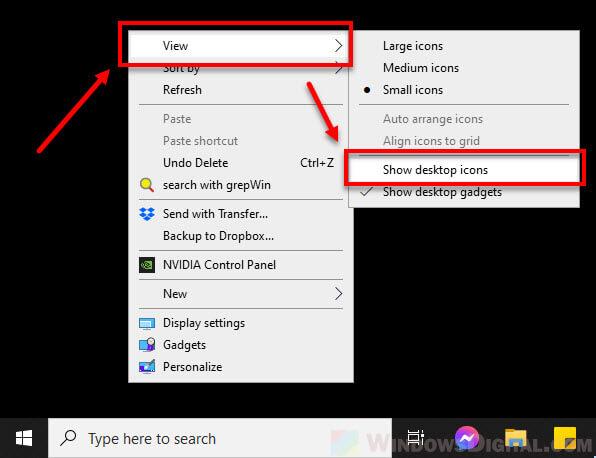Complete List of MS-DOS Commands
3310
30/11/2021

Windows 10 includes an option to
hide all the icons on your desktop
that’s easy to find. But if you want to hide only a few icons, you’ll need to dig a little deeper. Here’s how.
How to Show or Hide System Desktop Icons
Before we get into hiding regular files and folders on the desktop, it’s worth noting that Windows 10 includes a dedicated panel that lets you
hide and unhide system icons
such as your user folder, This PC, Recycle Bin, and Network.
If you want to hide or show one of these, open Settings and navigate to Personalization > Themes > Desktop Icon Settings. Check the boxes beside any icons that you want to show.
Click “OK” to save your changes, and you’ll see the results reflected on your desktop instantly.
RELATED:
Restore Missing Desktop Icons in Windows 7, 8, or 10
How to Hide Non-System Desktop Icons
If you want to hide a non-system icon on your desktop, things get a little more tricky. Luckily, Windows allows you to set any file or folder as “Hidden” with a check box in the item’s “Properties” window. When you enable this option, the selected item will disappear from File Explorer. The item will continue to exist, but it won’t show up in any of your File Explorer windows, including your desktop.
Advertisement
You can use this option to hide specific non-system desktop items, but you’ll need to prevent File Explorer from showing hidden files first. To do so,
open File Explorer
by pressing Windows+E, or by opening the Start menu, typing “This PC,” and hitting Enter.
In the File Explorer window that opens, click “View” in the menu bar and select “Options” in the toolbar below.
In the Folder Options window, click the “View” tab. Then, look in the “Advanced Settings” box and select “Don’t show hidden files, folders, or drives.”
Click “OK” to save your changes, and the Folder Options window will close.
Go to your desktop and find the icon that you want to hide. Right-click it and select “Properties.”
In the Properties window, click the “General” tab and then locate the “Attributes” section near the bottom of the window. Place a check mark beside “Hidden.”
Click “OK,” and your icon will disappear.
Advertisement
Keep in mind that hiding an icon

📹 how to hide desktop icons Dear Friends, Greetings!!! Today, We are uploading video for how to hide... https://t.co/lHkffz5reA
— Technical Tomato Sat Sep 29 14:59:13 +0000 2018
How to Unhide Previously Hidden Desktop Icons on Windows 10
Since you can’t right-click a hidden icon to uncheck the “Hidden” option, you must first enable File Explorer’s “Show Hidden Files” setting to see any non-system icons that you hid using the method listed above.
To do so, open a File Explorer window, click “View” in the menu, and select “Options” in the toolbar. In the Folder Options window, click the “View” tab. In the “Advanced Settings” box, select “Show hidden files, folders, and drives.”
Then click “OK,” and the Folder Settings window will close.
Now go to your desktop, and you’ll see hidden icons that appear translucent. Right-click a hidden icon and select “Properties.”
In the Properties window, click the “General” tab, and then uncheck “Hidden.”
Advertisement
Click “OK” at the bottom to save your changes, and the Properties window will close.
In the future, if you’d like to prevent others from accessing your apps, you might want to consider
adding password protection to your apps
instead. Good luck!
RELATED:
How to Password Protect Applications on Windows 10
READ NEXT
›
How to Remove Suggestions from Chrome’s New Tab Page
›
How to Freely Move Pictures in Microsoft Word
›
How to Use Alexa Offline with Smart Home Devices Using Echo
›
How to Remove a Background in Photoshop
›
How to get you Background AirPods will announce incoming calls and notifications on iPhone
